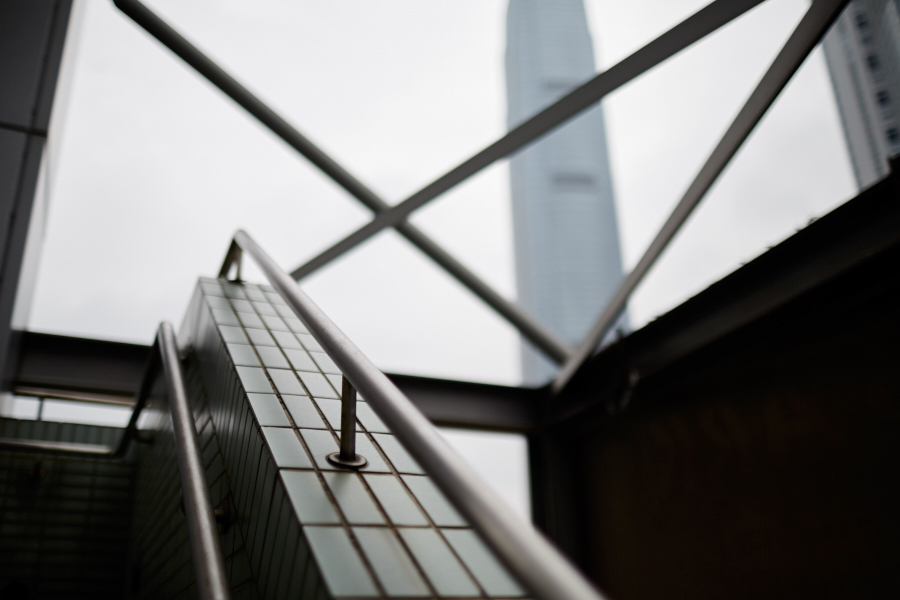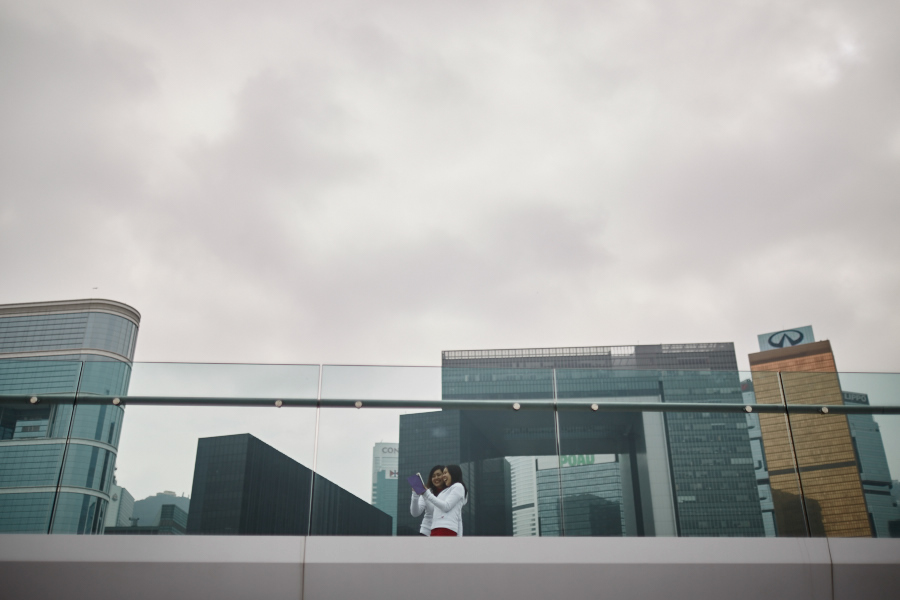
I shot these images with a 35mm lens after a written conversation with Beijing based designer Zhang Yanni who made me think how differently lenses would tell the same story, or more accurately: how differently they would interpret the environment and how the wider frame would impact on how I looked for content and arranged it in the frame.
So abandoning my usual 50mm lens, I spent the day with a 35mm and it took a lot of effort to get to work the lens well (if I did at all: you be the judge). Anything from a 50mm longer has the ability to formalise the frame's content. So my standard principle is to arrange the content in the frame and (if I want) capture people in a good part as they pass through it. A 35mm lens is much wider and you have to deal with all manner of distortion and things poking into the frame you don’t normally get. The components are all over the place, and often refuse to be corralled into something aesthetically pleasing. I am used to my lenses behaving themselves, but this 35mm lens seemed to have ADHD and it took a long time to figure out how to frame things.
The first lesson was to get closer; much closer. And then to try and accept the convergence of parallels and the unruly frame. I figured out that it's a much more responsive lens too; it works best at speed, giving much more of a storytelling aesthetic than anything longer. It’s a stock in trade for photojournalists and when I was at the Observer I’d often work with 24s, 28s and 35mm lenses at f5.6 or f8, and not work with anything much longer except a 135mm or 180mm. Needless to say my framing then was crap because so much was in focus (but it didn’t matter much, back in those days half tone printing murdered any quality in your image anyway). Soft backgrounds are a hugely efficient way of keeping the information under control.
So my usual bias toward a very shallow depth of field was a serious headache with this wider lens, adopting a reportage stye but shooting at f1.4 is a recipe for disaster, and it took a while to figure out how to focus as quickly as I was framing. I just had to learn that the frame is less important, the content becomes king and the drop off in focus remained a compositional aid the same way with any other lens, just less so as the wider the lens, the more inherent depth of focus it has, so you have to work close (like the shot above), or adopt an approach where you accept a lot of deep frame sharpness and work harder to wrestle the content into submission (like the shot below).
It was fun (eventually) and I might use it more now, especially in environments that are more open but have the key content closer. I think it'll work well in landscapes that breath a little. I might even work with my 24mm f1.4; it can’t be that much more scary can it?
Thank you Zhang Yanni. I dedicate this set to you.


















